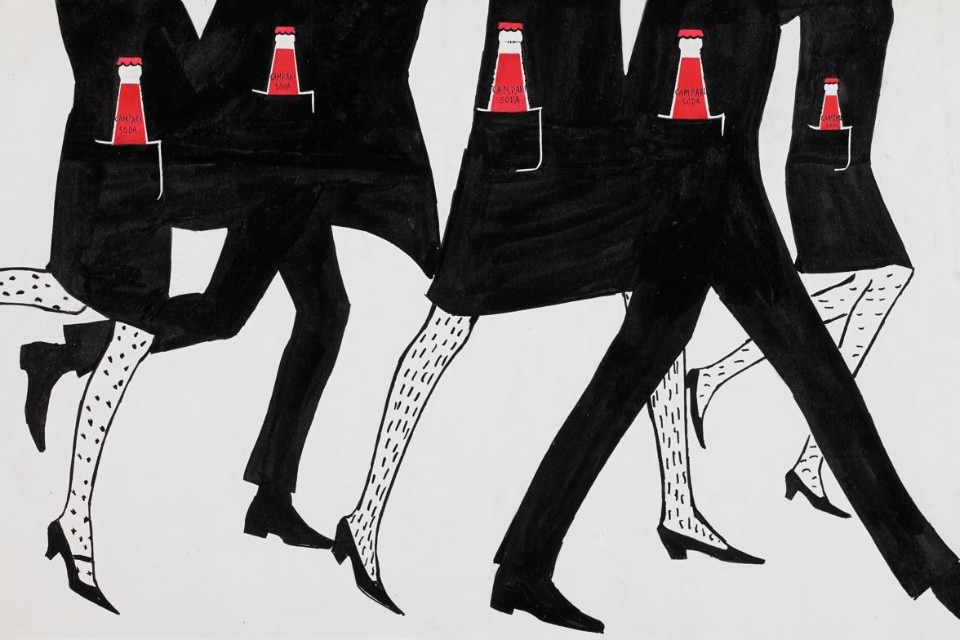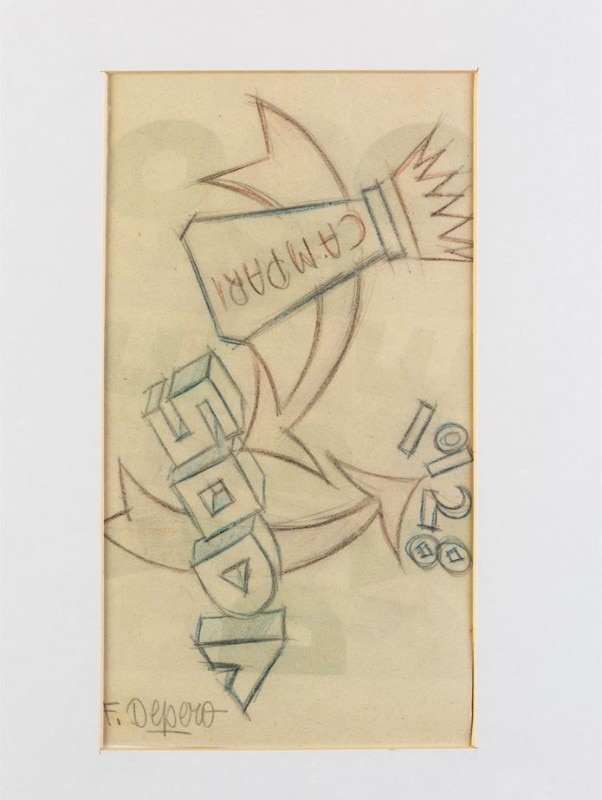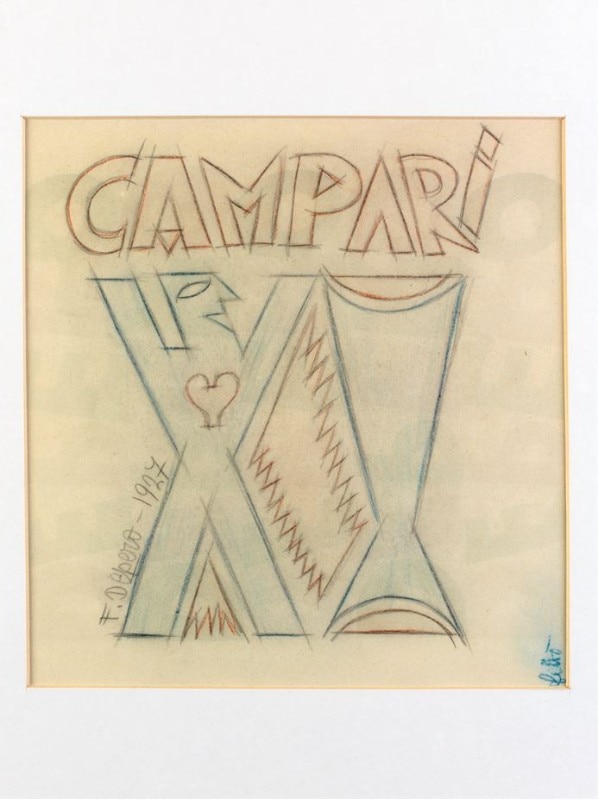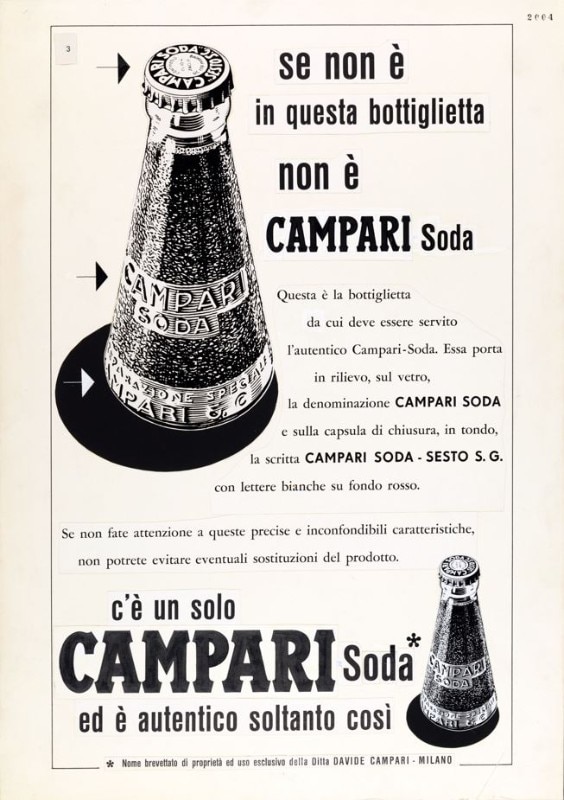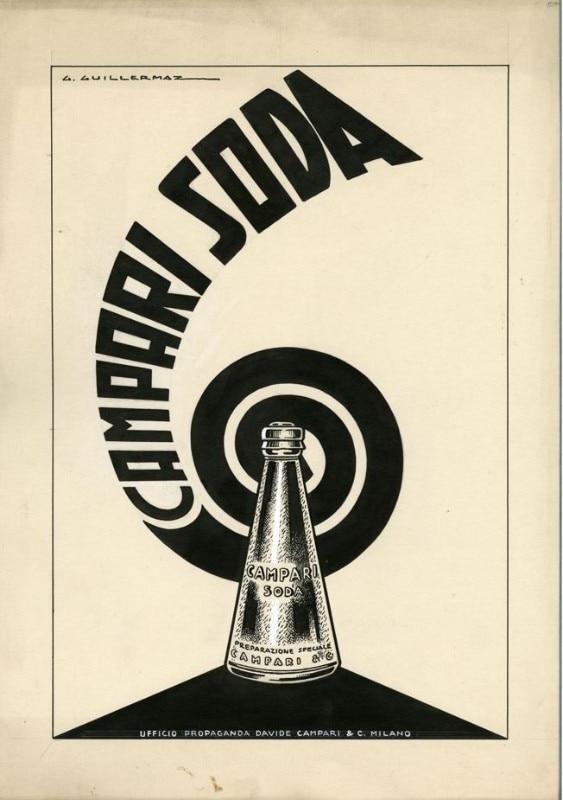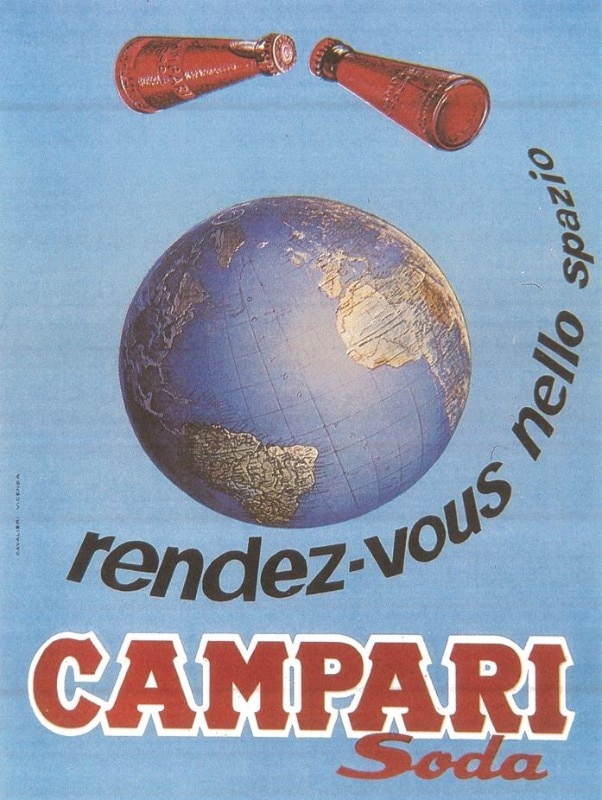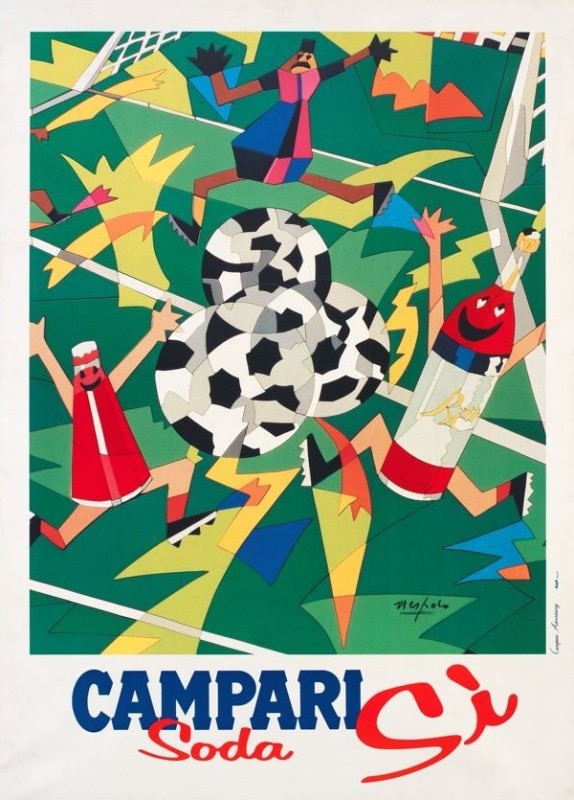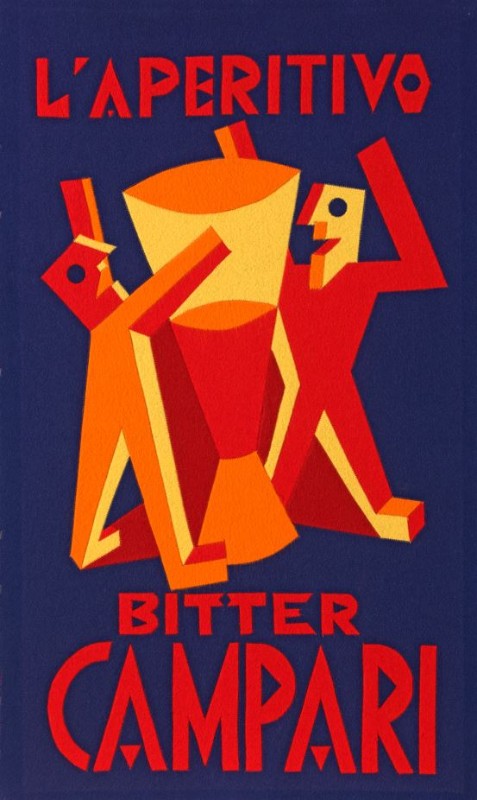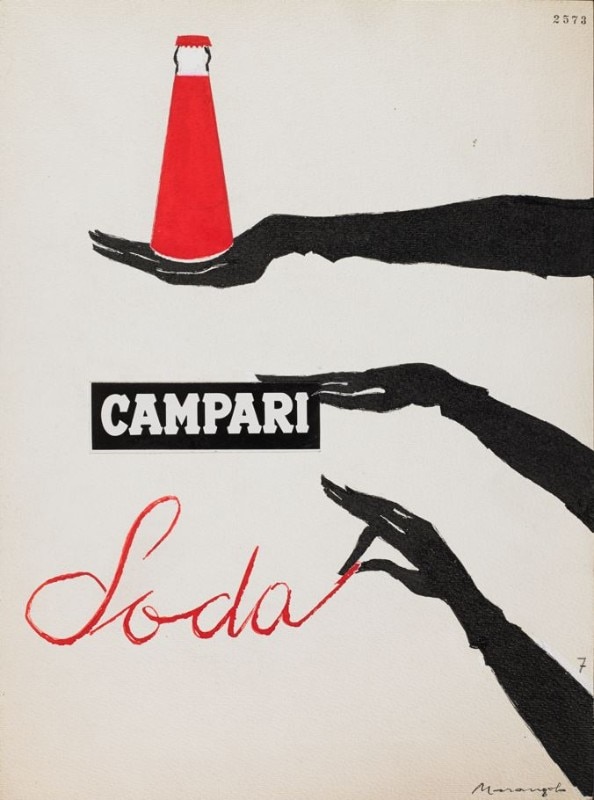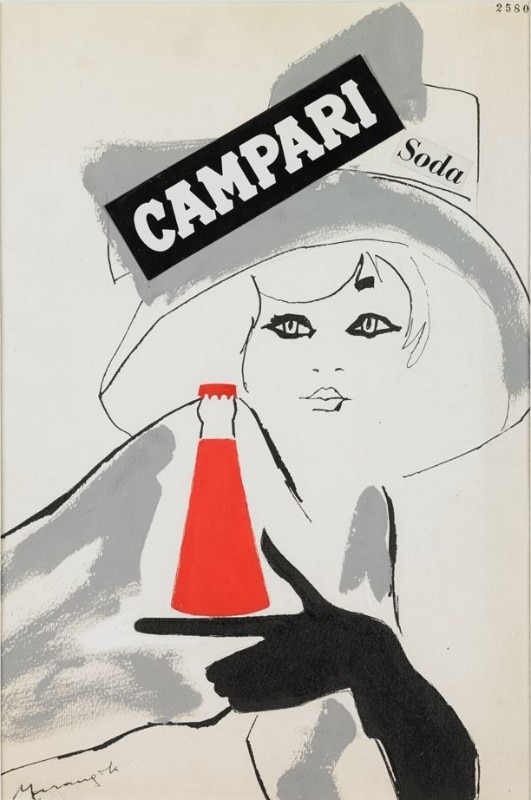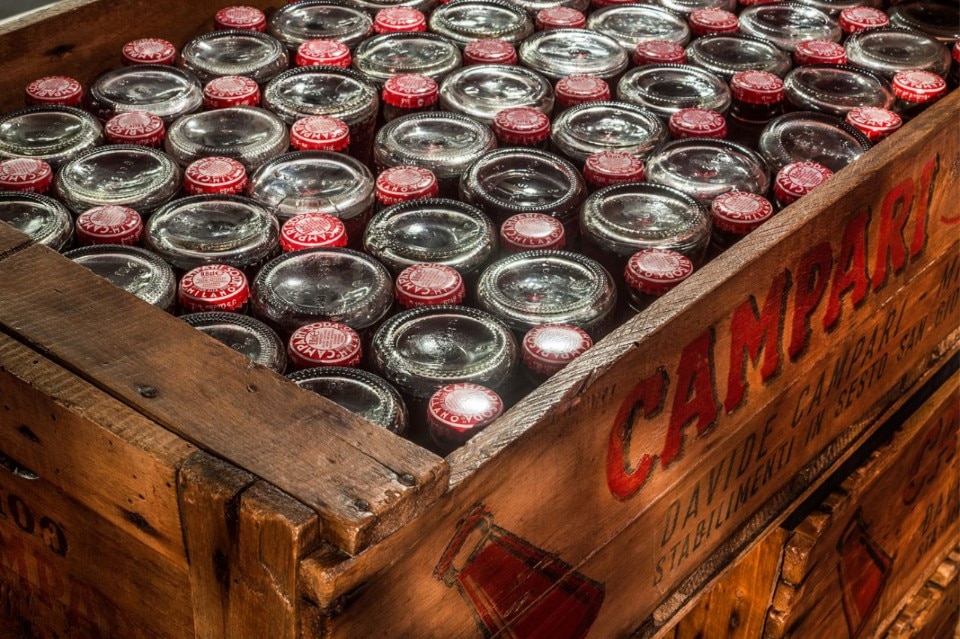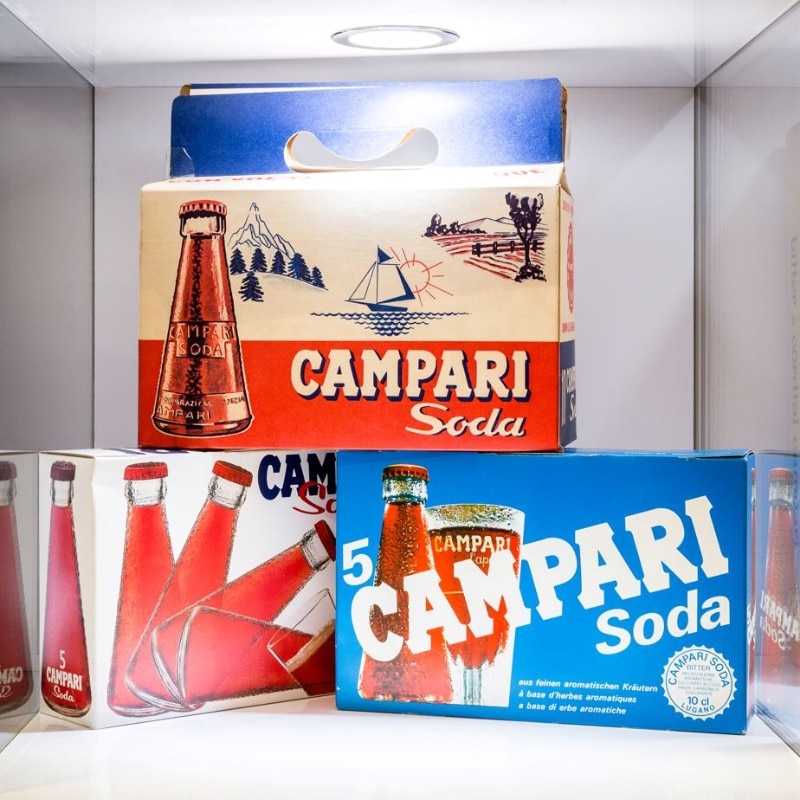It has been exactly 90 years since Fortunato Depero designed the iconic Campari Soda bottle in 1932. After Bitter Campari (a ruby red aperitif) and Cordial Campari (a liqueur obtained from the maceration of raspberries with cognac), in the early 1930s, the Milanese Davide Campari’s company decided to launch an absolutely innovative product – Campari Soda, the first single-serve aperitif that offered a cocktail bitter mixed with soda directly in the bottle and in the right proportions, without the need to add seltzer with a siphon. But the innovation represented by the product would not have had the impact and success it did without the innovation represented by the bottle.
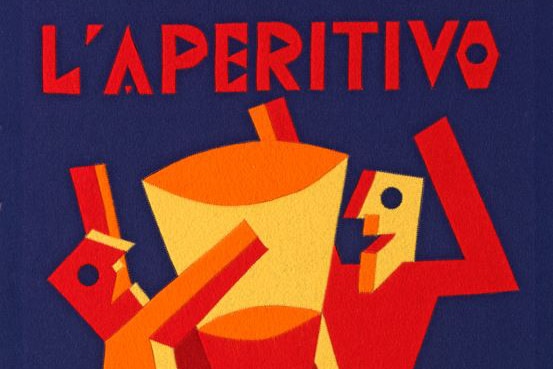
 View gallery
View gallery
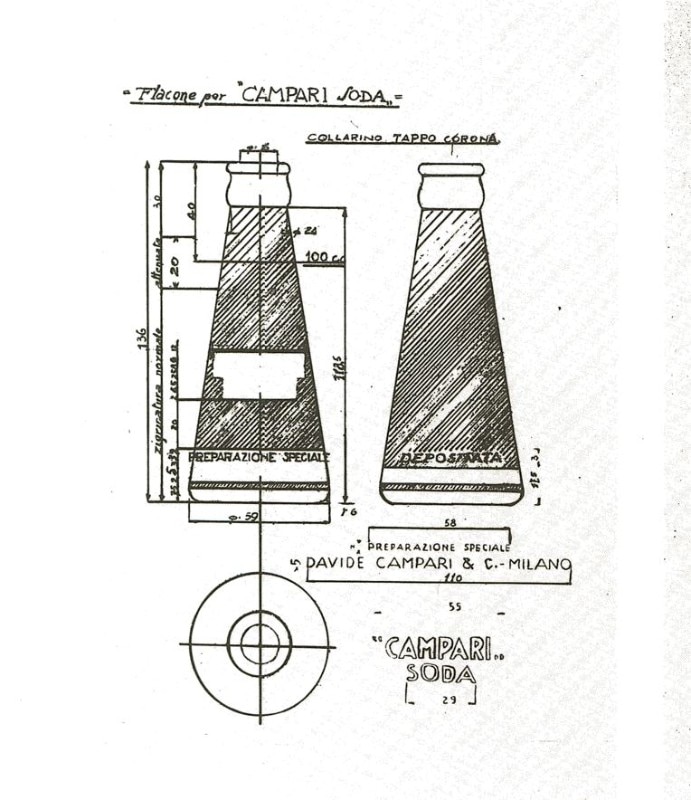
Campari Soda
Technical sketch by the glass-factory Angelo Bordoni e Figlio to produce Campari Soda bottles, 1930’s
Courtesy Galleria Campari
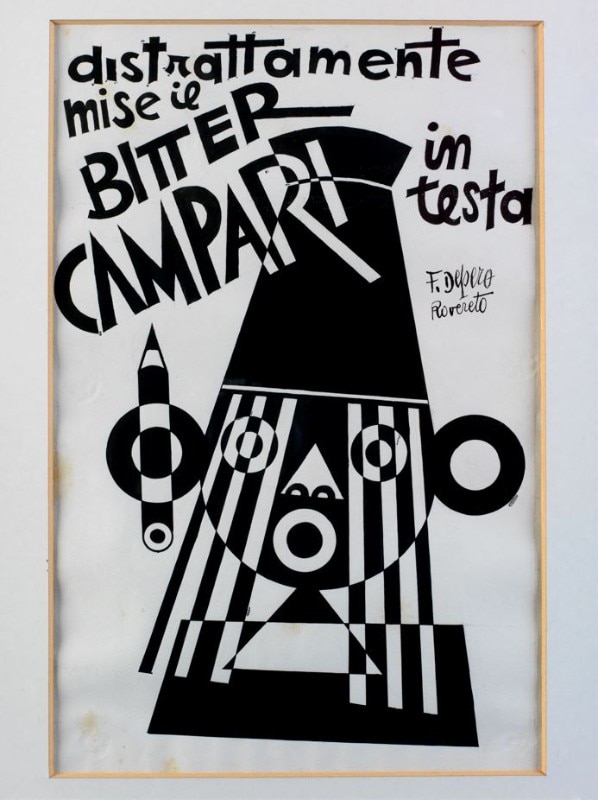
Campari Soda
Fortunato Depero, Distrattamente mise il Bitter Campari in testa (Absently he put the Bitter Campari on his head), 1928
Courtesy Galleria Campari
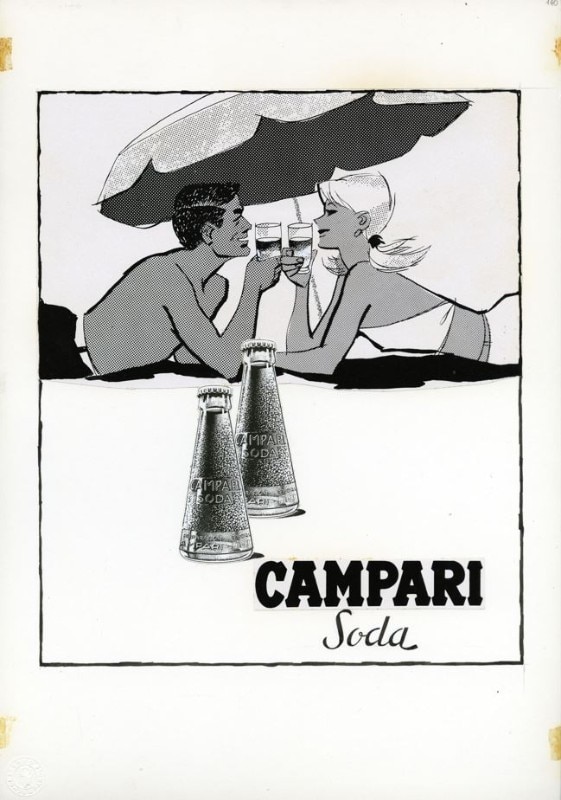
Campari Soda
A. Saccone and Speed Agency, Campari Soda, 1964-69
Courtesy Galleria Campari

Campari Soda
Technical sketch by the glass-factory Angelo Bordoni e Figlio to produce Campari Soda bottles, 1930’s
Courtesy Galleria Campari

Campari Soda
Fortunato Depero, Distrattamente mise il Bitter Campari in testa (Absently he put the Bitter Campari on his head), 1928
Courtesy Galleria Campari

Campari Soda
A. Saccone and Speed Agency, Campari Soda, 1964-69
Courtesy Galleria Campari
Designed by Depero and commissioned to the Bordoni glassworks, the bottle shaped like a truncated cone or an inverted goblet was to be made of frosted glass, with two embossed lines at the base with the words “Preparazione speciale Davide Campari & C., Milano”, while the name Campari Soda was to appear in the central field. All these details, together with the special red shade of the drink and the absence of a paper label, which was typical of all alcoholic drinks on the market, made Campari Soda a product capable of breaking convention and finding new ways to seduce the public.
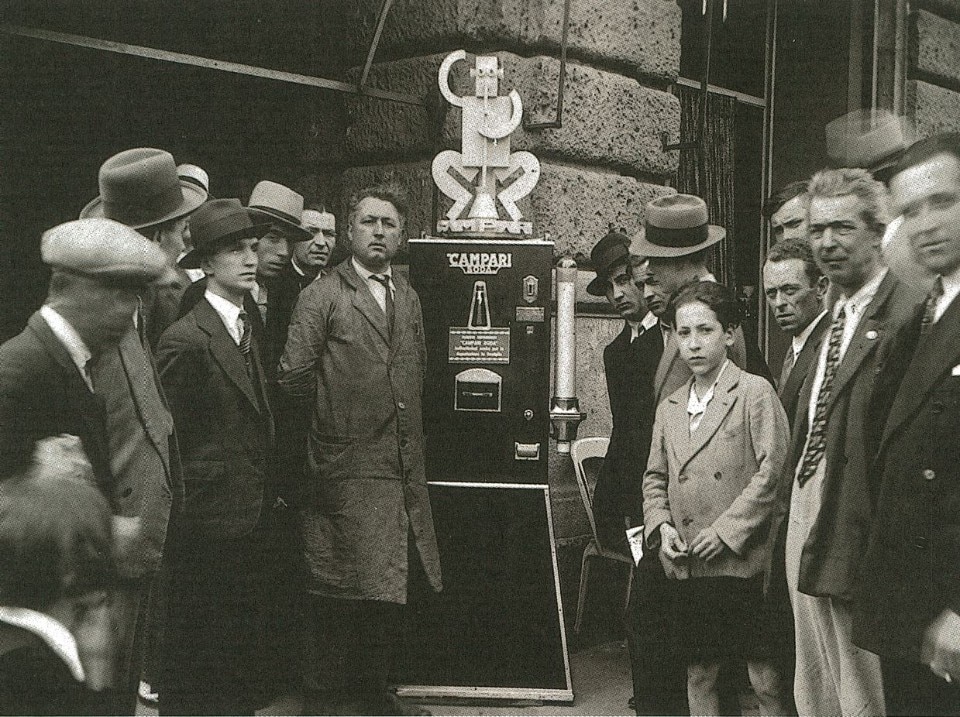
Depero’s contribution was probably more ideational than technical or executive. In fact, the cone-shaped bottle recalls, not by chance, similar morphologies found in compositions and decompositions of a geometric matrix that appear in many posters, but also in promotional objects designed by Depero himself. The unique tactility offered by the transparent frosted glass, with the words embossed on the glass, combined with the great visibility offered by the red shape of the drink, is also part of the search for synaesthesia that was so dear to the avant-garde culture of the early 20th century.
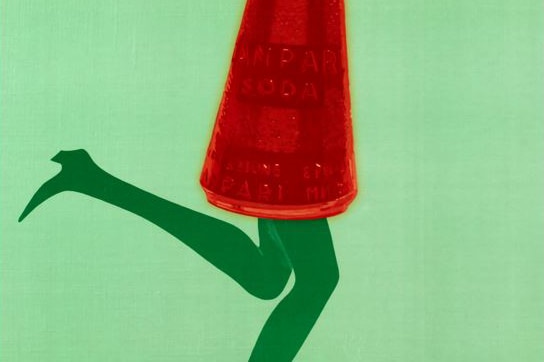
 View gallery
View gallery
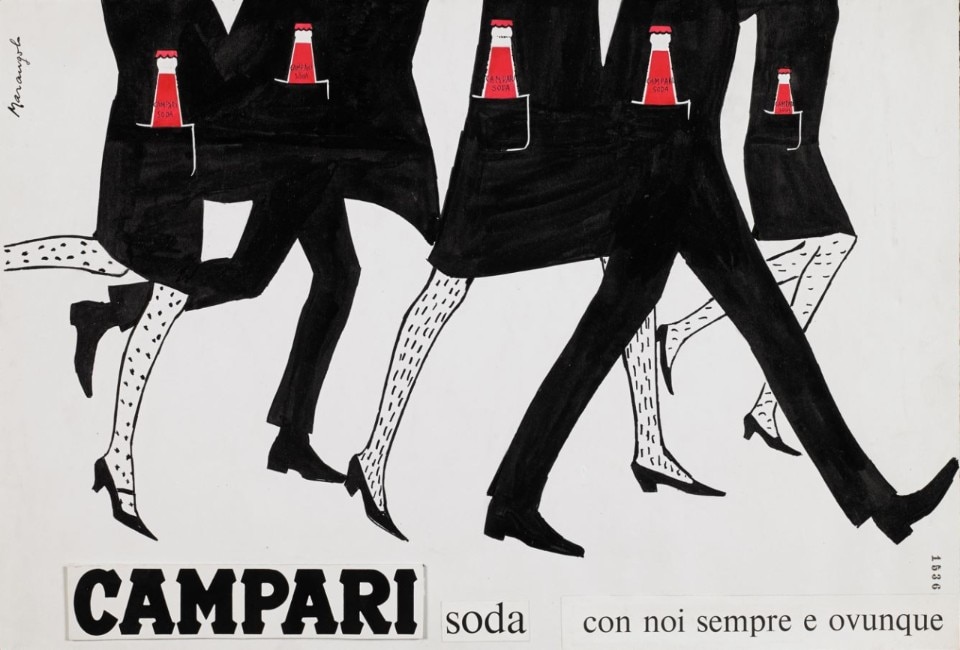
Campari Soda
Franz Marangolo, Campari Soda con noi sempre e ovunque (Campari Soda with us anytime, anywhere), 1960s
Courtesy Galleria Campari

Campari Soda
Franz Marangolo, Senza parole (Without words), 1960s
Courtesy Galleria Campari
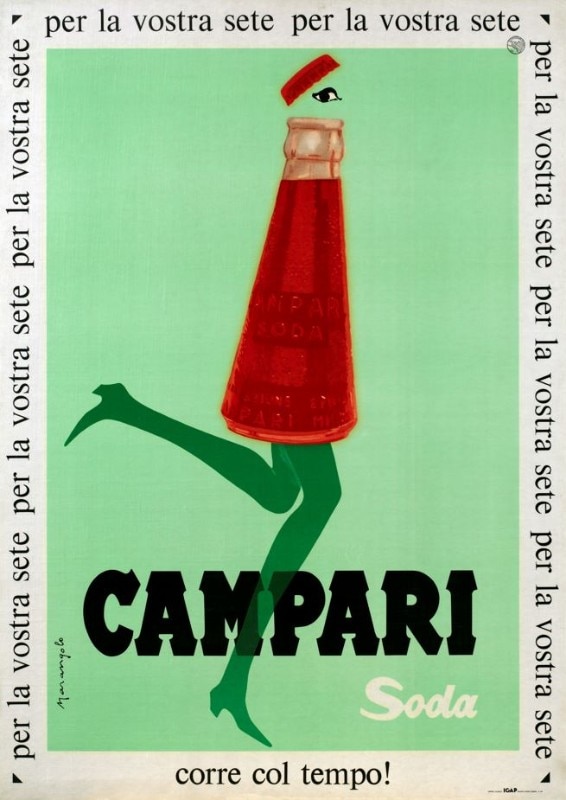
Campari Soda
Franz Marangolo, Per la vostra sete, Campari Soda corre col tempo! (For your thirst, Campari Soda runs with time!), 1960s
Courtesy Galleria Campari
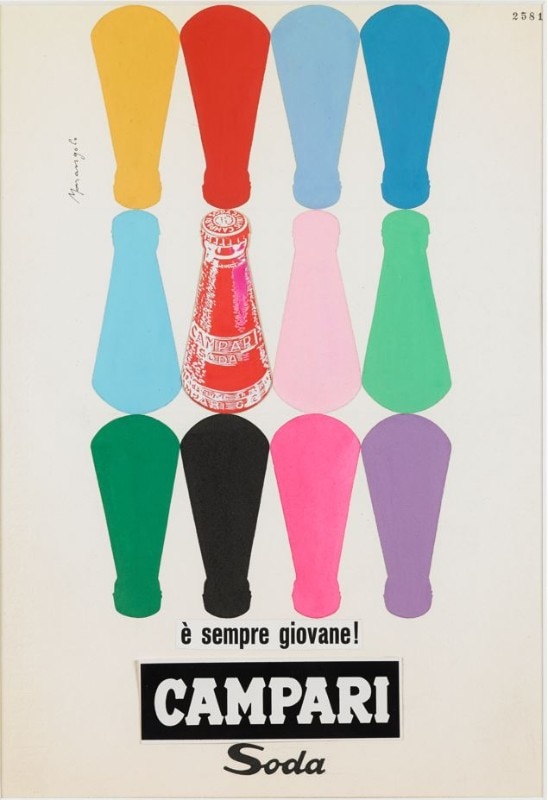
Campari Soda
Franz Marangolo, Campari Soda è sempre giovane! (Campari Soda is always young!), 1960s
Courtesy Galleria Campari
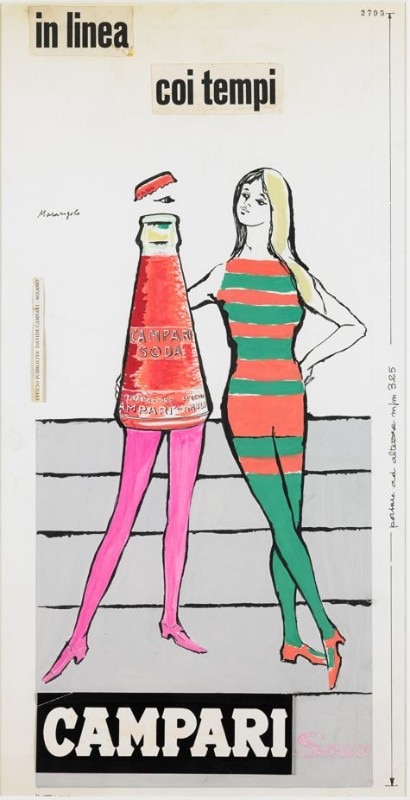
Campari Soda
Franz Marangolo, Campari Soda è in linea coi tempi (Campari Soda is in line with the times), 1960s
Courtesy Galleria Campari
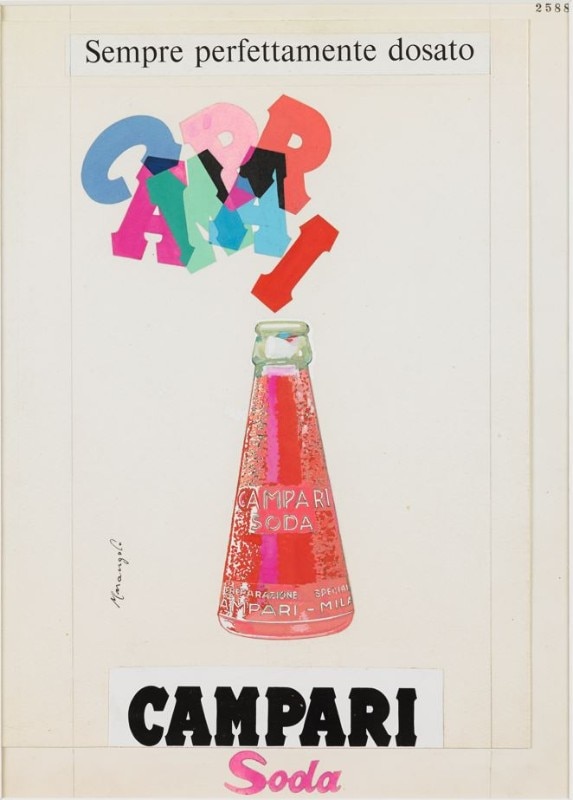
Campari Soda
Franz Marangolo, Campari Soda, Sempre perfettamentamente dosato (Campari Soda, Always perfectly dosed), 1960s
Courtesy Galleria Campari
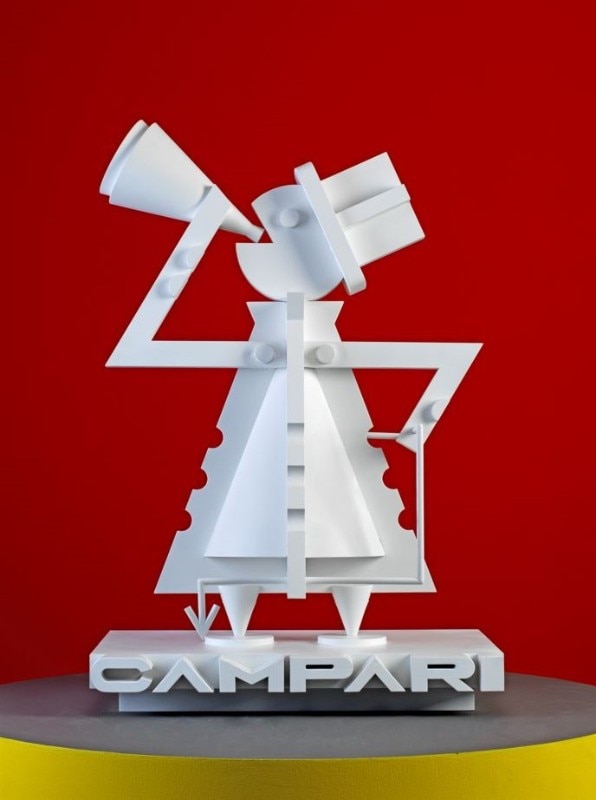
Campari Soda
Fortunato Depero, Wooden puppet Campari, 1928, Giovanni Sacchi (maker), 1980s
Courtesy Galleria Campari
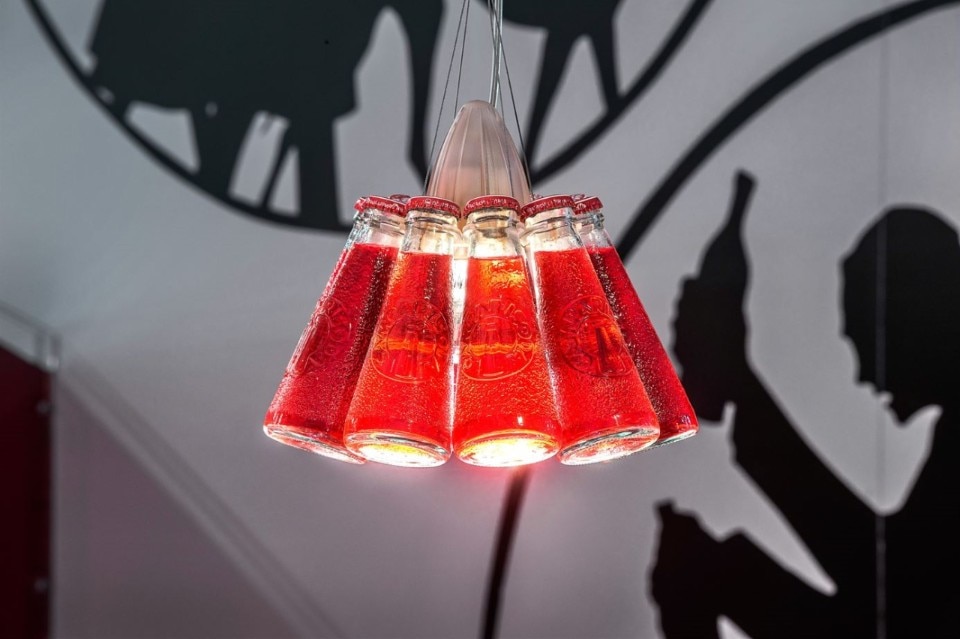
Campari Soda
Raffaele Celentano for Ingo Maurer GmbH, Campari Light, 2002
Courtesy Galleria Campari

Campari Soda
Franz Marangolo, Campari Soda con noi sempre e ovunque (Campari Soda with us anytime, anywhere), 1960s
Courtesy Galleria Campari

Campari Soda
Franz Marangolo, Senza parole (Without words), 1960s
Courtesy Galleria Campari

Campari Soda
Franz Marangolo, Per la vostra sete, Campari Soda corre col tempo! (For your thirst, Campari Soda runs with time!), 1960s
Courtesy Galleria Campari

Campari Soda
Franz Marangolo, Campari Soda è sempre giovane! (Campari Soda is always young!), 1960s
Courtesy Galleria Campari

Campari Soda
Franz Marangolo, Campari Soda è in linea coi tempi (Campari Soda is in line with the times), 1960s
Courtesy Galleria Campari

Campari Soda
Franz Marangolo, Campari Soda, Sempre perfettamentamente dosato (Campari Soda, Always perfectly dosed), 1960s
Courtesy Galleria Campari

Campari Soda
Fortunato Depero, Wooden puppet Campari, 1928, Giovanni Sacchi (maker), 1980s
Courtesy Galleria Campari

Campari Soda
Raffaele Celentano for Ingo Maurer GmbH, Campari Light, 2002
Courtesy Galleria Campari
Being the result of a collaboration between Davide Campari and one of the leading exponents of the Futurist movement, the Campari Soda bottle testifies to a period in our history and culture in which companies used to turn to artists in order to design their communication, and artists did not shy away from entering the market. Moreover, in his 1931 Manifesto dell’Arte Pubblicitaria Futurista, Depero denied art as it had been understood by idealistic aesthetic speculation, stating that the artistic product is not pure, disinterested or spiritual, but utilitarian and ideologised. The Campari Soda bottle is a concrete implementation of this theory.
It is interesting to note that a few years after Campari Soda was launched, in order to increase the popularity of the drink everywhere, including in public places, a coin-operated Campari Soda machine was designed. And it could be considered a precursor of the more recent vending machines.
Opening image: Franz Marangolo, Campari Soda con noi sempre e ovunque (Campari Soda with us, anytime and anywhere), 1960s. Courtesy Galleria Campari


